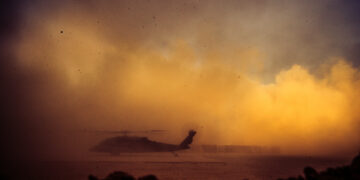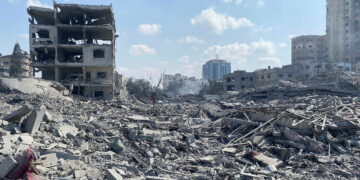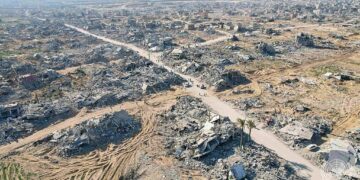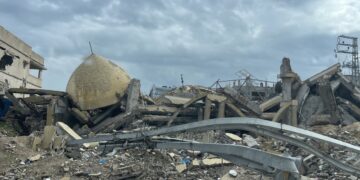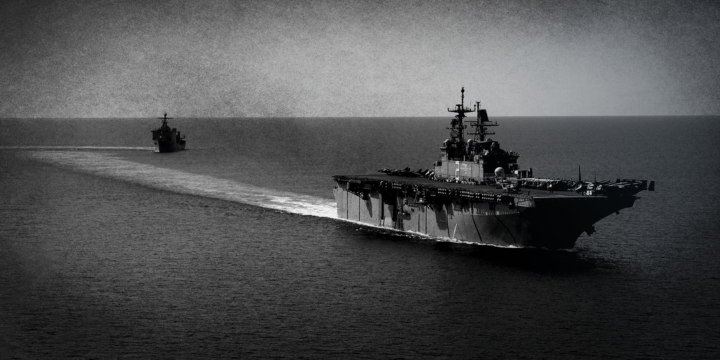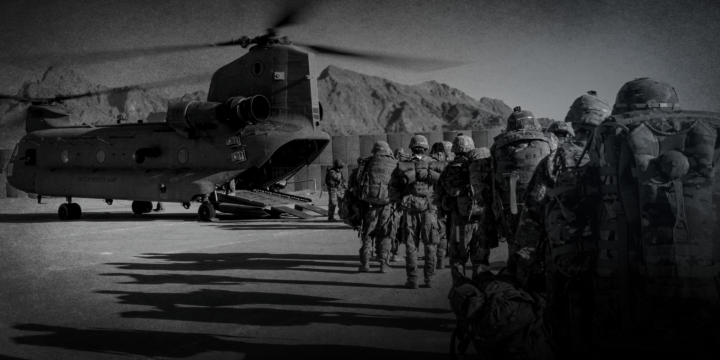Home / Israel-Hamas / Understanding the Israel-Hamas War
November 3, 2023
Understanding the Israel-Hamas War
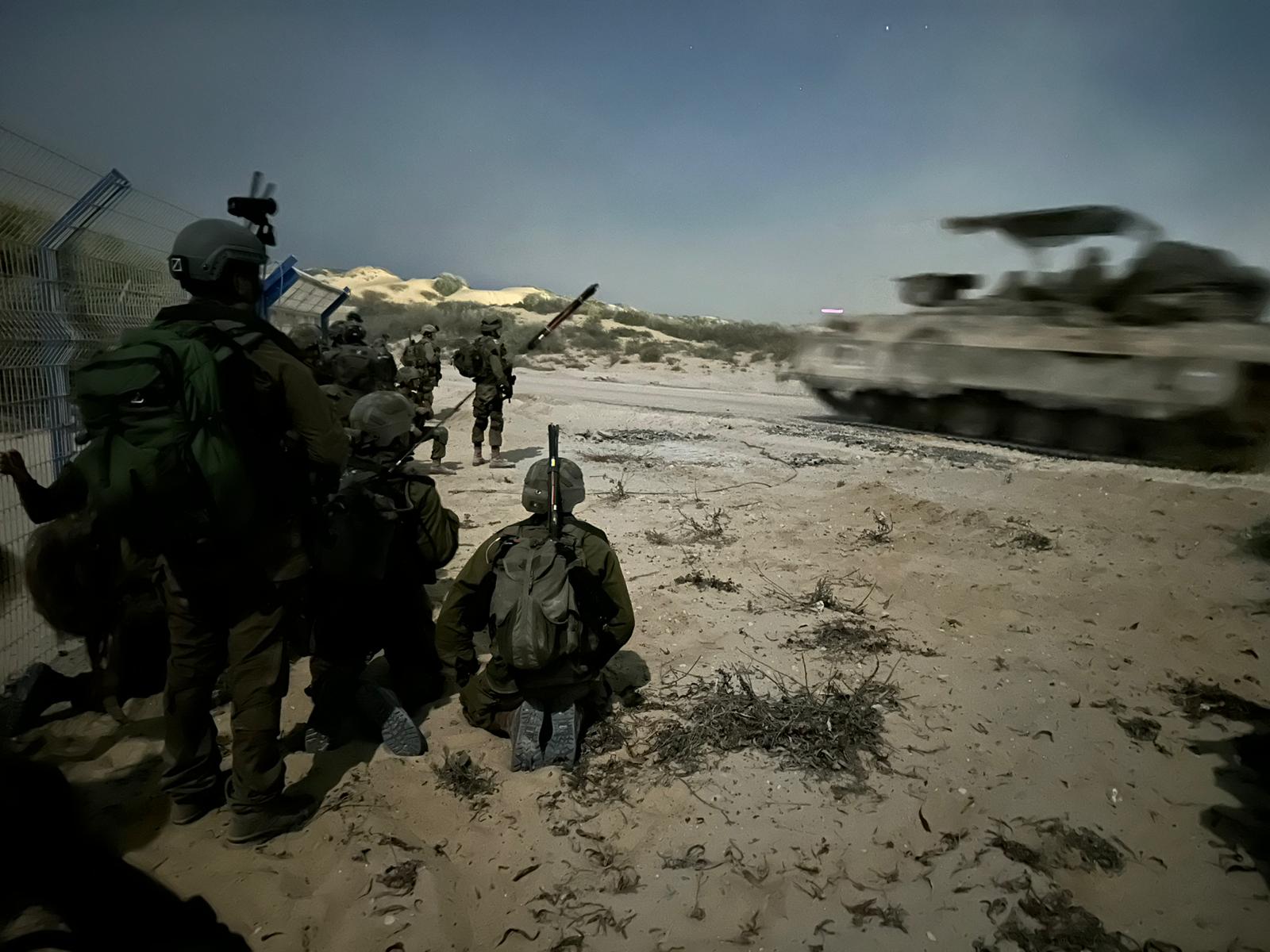
U.S. priorities
- The United States can and should avoid direct military involvement in the conflict, as it has in previous Arab-Israeli conflicts. No major U.S. interest is served by direct involvement, Israel can handle its own defense, and the risk of escalation and blowback against the United States is profound.
- Washington should work with all parties to prevent the conflict from spreading to new fronts and expanding into a regional war. A wider war would pose significant harm to U.S. national security interests around the world.
- The U.S. should redeploy its troops from Syria—and eventually Iraq—to larger and better defended bases in order to deny Iran its most dangerous lever for escalating the war. The U.S. presence in northeast Syria is the most urgent to redeploy, as it remains most at risk of succumbing to a major attack that kills American troops.
Bottom lines
- Any new U.S. military deployments to the Middle East should be limited and temporary—serving to protect U.S. forces, provide deterrence via air and naval assets, and enable contingency capabilities to save U.S. lives if non-combatant evacuation operations (NEO) from embassies or consulates are necessary. Any U.S. deployments should augment defensive Israeli military capabilities, but should not include U.S. ground troops. The U.S. should not contribute to any hypothetical U.N. peacekeeping mission that would keep American soldiers in Gaza for decades.
- As Qatar’s largest foreign direct investor, the U.S. can exert diplomatic and economic pressure on Doha, where Hamas senior leadership is based, to facilitate the release of hostages in Gaza. Successful hostage negotiations would shorten the conflict and decrease risks for U.S. involvement.
- Military operations against Hamas should adhere to the Laws of Armed Conflict (LOAC); targeting military planners, officers, members, or agents responsible for the terrorist attack on October 7; and be discriminate and proportional. Any U.S. support to Israel should also remain consistent with applicable international law, including with respect to the delivery of humanitarian aid.
- U.S. military advisors initially urged the IDF to consider a “degrade” rather than “destroy” approach to dealing with Hamas—combining precision airstrikes targeting leadership with special operations raids to secure hostages and eliminate terrorist cells. As expected, however, Israel has undertaken significant ground operations in Gaza, which are intended to encircle and isolate Gaza City from the south to achieve the first stage of the IDF’s stated strategic objective to “eliminate” Hamas.
- Sustained, full-scale ground operations in Gaza could take months or longer to complete, will inevitably involve significant civilian casualties, and—to fully demilitarize Hamas—would necessitate the clearing, flooding, or destruction of nearly 300 miles of underground tunnel networks.
- A long and bloody ground incursion could also serve as a tripwire for Hezbollah, Iran, or Shia militias to increase their involvement in the conflict at any point, ultimately undermining both U.S. and Israeli security. The longer the war continues, and as more civilians are killed, risks of blowback on the United States through terrorist attacks on U.S. military bases, embassies, and citizens around the world grows.
- Most concerning, however, is the issue of post-conflict governance. Hamas may be physically destroyed, but ideological drivers and manipulation of public grievances will continue to attract disaffected Palestinians to radicalism, absent any political change. It is hard to imagine a workable alternative to Hamas under Gaza’s status quo, and something similarly radical is likely to grow from its ruins. Moreover, the Palestinian Authority has no public credibility, and an Israeli-run occupation would be a costly affair which Israeli leaders have shown no desire to restore. The U.S. faced a similar governance vacuum following the invasion of Iraq in 2003, and it led to a civil war, the rise of ISIS, and an expansion of Iranian influence across the region.
Regional dynamics and risks
- Iran remains content to create difficulties for U.S. troops in the Levant via an umbrella of Shia militia groups while avoiding a direct war with the United States. Iran is unlikely to step into the conflict to save Hamas, as the group is much less important for Tehran to preserve than Hezbollah—their most effective proxy in the region. Iran is also aware of its limited conventional capabilities in the face of overwhelming U.S. firepower now concentrated in the Eastern Mediterranean and Persian Gulf.
- After weeks of silence, Hezbollah leader Hassan Nasrallah gave his first public address since the conflict began. Nasrallah’s speech distanced Hezbollah from the October 7 terrorist attack, calling it “100% Palestinian,” and separately praised Shia militia groups in Iraq. While Hezbollah remains unlikely to increase involvement in the conflict without Iranian approval, the group’s ability to influence Shia militias in Iraq to conduct more attacks on U.S. troops remains a key vector for escalation. Hezbollah and IDF skirmishes in the Shebaa Farms area along the Lebanese border have continued, to include one-way drone attacks on November 2.
- U.S. troops in Iraq and Syria have been attacked by Iran-backed Shia militia groups at least 27 times between October 17 and October 31, according to the Pentagon. This increased frequency of attacks is a result of the Israel-Hamas conflict, posing renewed risks to U.S. forces and increasing the possibility of a wider war. Dozens of U.S. soldiers have been injured in these attacks, many of whom have been diagnosed with traumatic brain injuries. Now is the time to reevaluate the U.S. troop presence in Syria and Iraq before something catastrophic occurs. Washington can leverage both unmanned systems and local partners to accomplish the limited remaining anti-ISIS mission from elsewhere, as it has done successfully with “over-the-horizon” capabilities in Afghanistan.
- Because U.S. airstrikes aren’t deterring attacks on American troops in Iraq and Syria, some politicians are calling for strikes on targets inside Iran, like oil refineries or Islamic Revolutionary Guard Corps-Quds Force (IRGC-QF) sites. These actions would embroil America in a broader war and invite a major response against Israel from Hezbollah. Attacks on U.S. troops in Iraq and Syria will no doubt continue—the solution is to remove U.S. forces which remain as targets only because they’re within range of these local militias. By redeploying American troops from northeast Syria, the U.S. would deny Iran leverage it needs to widen the war—they are safer at better defended CENTCOM hubs in Kuwait, Bahrain, Saudi Arabia, or the UAE. In a crisis, these troops are entirely focused on defensive “force protection”—and not their nominal counterterrorism mission—which means relocating them would also not disrupt current CT operations.
- Despite Turkish President Erodgan’s rhetoric, fears of Turkey entering the Israel-Hamas conflict—or of a wider Turkish occupation of northern Syria—remain overblown, as both would gravely undermine Turkey’s interests. If Turkey expanded its incursion into Syria after a U.S. withdrawal, it would upend relations with the wider Muslim world that Erdogan has just pledged to support in the aftermath of October 7. In any case, the U.S. should not allow concerns about regional actors like Turkey to dictate the posture of America’s armed forces in Syria or elsewhere. Ankara’s economy still faces a currency crisis, worsened in part by Turkey’s previous incursion into Syria, which faced firm opposition from the Arab League, Iran, and even Russia. As it strays from the West, those relationships have only become more valuable to Erdogan.
- The U.S. ability to surge its military forces anywhere in the world in just hours, as underscored by recent airlifts and naval deployments to the Middle East, demonstrates that permanent U.S. ground forces are not as important to power projection or deterrence as they were in the past. As such, U.S. force posture should evolve to a “surge” rather than “maintain” framework.
Backgrounds
- Of nearly 40,000 U.S. troops still in the Middle East, roughly just 900 U.S. troops remain in Syria and about 2,500 in Iraq. They have been attacked more than 83 times by Iran-backed Shia militia groups since 2021. Despite previous U.S. airstrikes against Iranian proxy groups to “reestablish deterrence” twice in 2021, again in 2022, and twice more in 2023, attacks on American troops have continued. Fewer than 12 hours after U.S. airstrikes targeted Iranian proxies along the Iraq-Syria border on October 26, attacks were again launched on U.S. forces in Iraq.
- On October 12, President Biden renewed Executive Order 13894 pursuant to Section 202(d) of the National Emergencies Act (50 U.S.C. 1622(d)), claiming that the enduring defeat of the Islamic State of Iraq and Syria (ISIS) and avoiding a deeper Turkish incursion into Syria justifies the continued presence of U.S. troops in Syria.
- Tehran, Washington, and Tel Aviv likely all recognize that expanding the war into a regional conflagration does not serve their core interests, but this alone cannot be relied on to avoid a wider war. Misperception, accidents, failure to ensure unity of command, and “tit-for-tat” skirmishes that spiral into open conflict remain risks for each party to the Israel-Hamas conflict, regardless of their strategic intent.
- Iran-backed Shia militias have operated as proxies for Tehran in Iraq and Syria for decades and contributed to the defeat of ISIS. Not all of these groups, of which there are dozens, are directly accountable to Tehran. In military terms, a “proxy” is best understood as an independent organization that maintains a line of communication—usually through a shared command and control (C2) node—to a host organization, and is “taskable,” meaning it can accept and execute specific orders from the host. Iranian influence over many of these groups, while substantial, doesn’t always meet this threshold; as groups like Kata’ib Hezbollah (KH) are closely tied to the IRGC, other Shia militias—especially in parts of Syria—are not. As such, a militia group supported by Iran but acting independently—or perhaps even in contravention of IRGC orders—that conducts a successful major attack on U.S. forces would greatly risk widening the war, even without Tehran’s intent.
More on Middle East
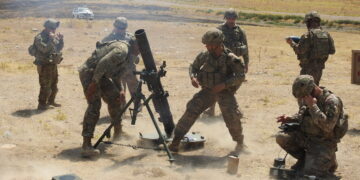
In the mediaCounterterrorism, Middle East
Featuring Daniel DePetris
October 8, 2025
Events on Israel-Hamas
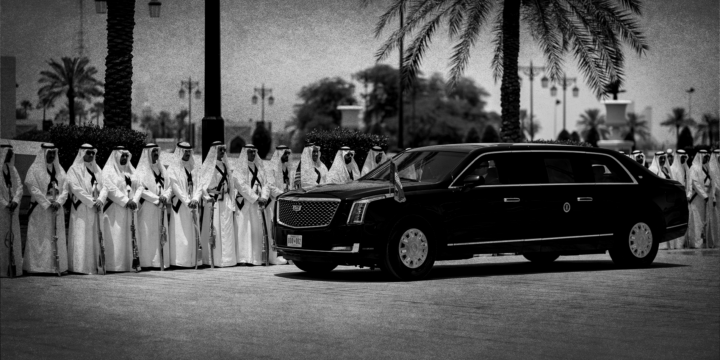
virtualMiddle East, Basing and force posture, Diplomacy, Houthis, Iran, Iraq, Israel, Israel‑Hamas, Military analysis, Syria
May 16, 2025

